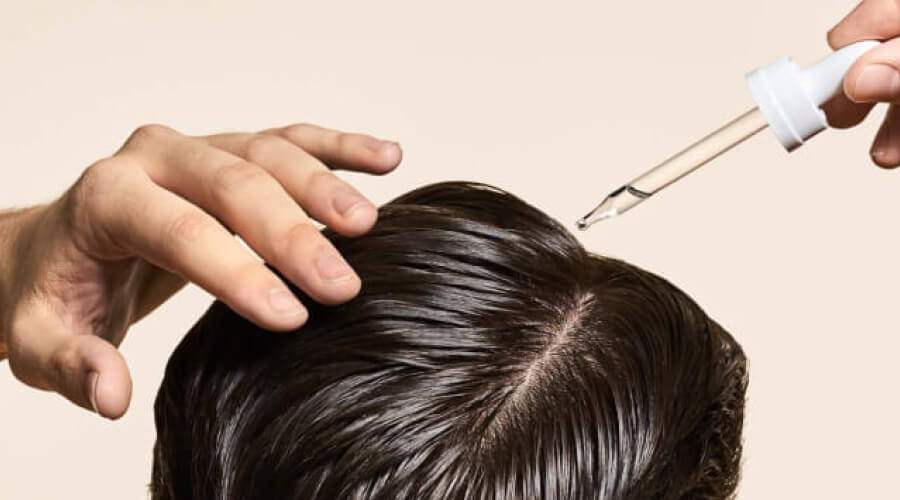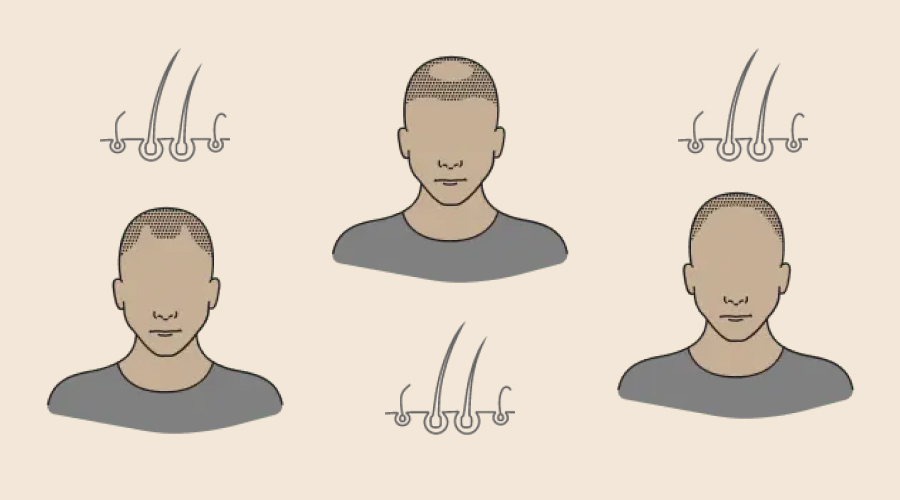How Does Minoxidil Work?
Your one-stop info hub covering minoxidil use and hair loss treatment in Australia.
Minoxidil For Hair Loss

Topical minoxidil is a hair loss treatment option available in Australia. It helps stimulate hair growth, tackle thinning hair, and decelerate the balding process in men and women.
Quick Facts About Minoxidil
- Use: Minoxidil treats male pattern baldness in males and thinning hair in females.
- Formulation: Minoxidil comes in a topical solution or foam applied to the scalp. Occasionally, your doctor may prescribe oral minoxidil for hair loss.
- Timeline: Don’t expect overnight results. Hair growth usually only begins a few months into treatment. You’ll likely see results within 4-6 months of consistent use.
- Efficacy: Research has concluded that minoxidil is effective for hair loss treatment. It works for around 2 in 3 men. Of course, success cannot be guaranteed.
Key Benefits Of Minoxidil
Minoxidil helps
- Reduce hair loss
- Slow the balding process
- Increase growth of new hair
- Combat the shrinkage of hair follicles
Can I Use Minoxidil?

Minoxidil works best for men and women under the age of 40. If your hair loss has only recently begun, then minoxidil treatment will likely be more effective for you.
It is an FDA-approved treatment for male and female pattern hair loss (androgenic alopecia).
Minoxidil is not suitable for:
- receding hairlines
- baldness at the front of your scalp
- unexplained, sudden, or patchy hair loss
- hair loss that arises after giving birth
What it doesn’t do: Minoxidil is not a permanent cure for baldness. If you choose to stop treatment, hair loss will begin in a few months. You may even lose hair faster than before treatment.
For men:
Minoxidil 2% or 5% is suitable. Formulations may be a solution or foam.
For women:
Minoxidil 2% solution and minoxidil 5% foam are suitable. Consult your health provider before using the more potent 5% formulation. Minoxidil 5% solution is currently not approved for women.

Safety And Precautions
The side effects of topical minoxidil are skin irritation, inflammation, redness, dryness, flaking, and itching on the scalp.
Many people who use this medication for hair loss do not experience serious side effects. However, some rare but severe adverse outcomes include:-
- chest pain
- rapid or irregular heartbeat
- weight gain
- swelling of the hands or feet
- dizziness or fainting
- difficulty breathing
These are unlikely with topical minoxidil, as long as you stick to the recommended directions for use.
Say you are pregnant, breastfeeding or have any medical condition or allergy. In that case, consult a healthcare professional before using minoxidil.
Buying Minoxidil In Australia
The only hair loss medication approved by the FDA does not require a prescription. Topical minoxidil is available over-the-counter in Australia.
You can buy topical minoxidil treatment from pharmacies, digital stores, and online vendors in Australia.
Oral minoxidil is also available in Australia on a prescription basis.
Finasteride vs Minoxidil
Both finasteride and minoxidil are FDA-approved to treat hair loss and balding. They treat male and female-pattern baldness and help encourage hair regrowth. However, neither serve as a cure for baldness. If treatment is stopped, any new hair gained will be lost.
| Finasteride | Topical Minoxidil |
|---|---|
| Oral medication | Medication applied to the scalp |
| Requires prescription | A non-prescription, over-the-counter product |
| Commonly reserved for men. May work for some women. | Can be used by men and women |
| Side effects include reduced interest in sex, impotence, and swelling of the hands and feet | Side effects usually confined to the area of application (redness, irritation) |
| May help with frontal hair loss and receding hairlines | Ineffective for frontal hair loss and receding hairlines |
Other Hair Loss Treatment Options
Finasteride
Finasteride is a prescription-only medication that treats hair loss in men. It can be used alone or in combination with minoxidil.
Hair transplant
Hair transplant is a form of surgery where a surgeon moves your existing hair to cover balding areas or regions with thinning hair. It’s usually performed under local anesthesia, and the procedure effects are considered permanent.
Platlet-rich plasma (PRP)
PRP is a form of injection. The sample is drawn for your blood and then injected into the scalp to help foster healing and hair growth.
Laser therapy
Low-level laser therapy aims to stimulate hair follicles and encourage hair growth. These procedures are generally safe, low-risk, and can treat pattern baldness and men and women.
Other medications
Corticosteroids: Used for hair loss or balding due to autoimmune conditions such as alopecia areata, where immune cells attack hair follicles, causing hair to fall out.
Spironolactone: Reduces the production of male hormones in women, hence, slowing down the progression of hair loss.
Hormone replacement therapy: A common and effective treatment option for menopausal or post-menopausal women experiencing hair loss due to reduced production of female hormones.